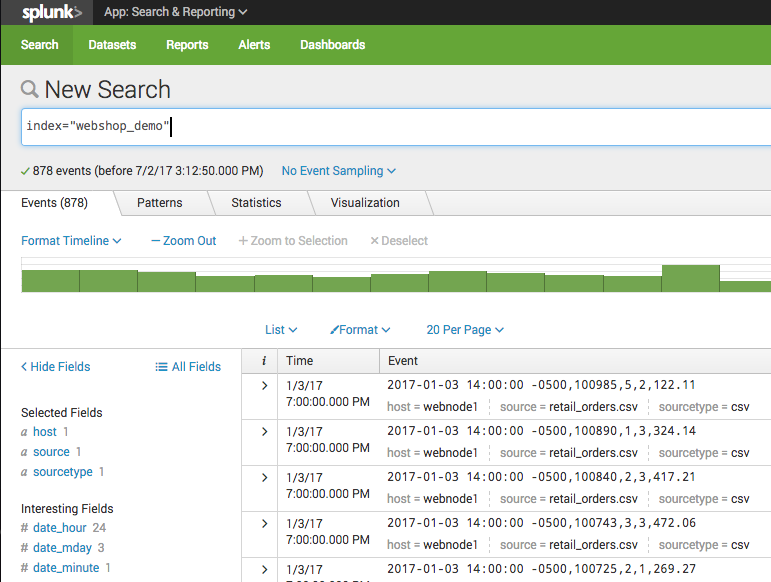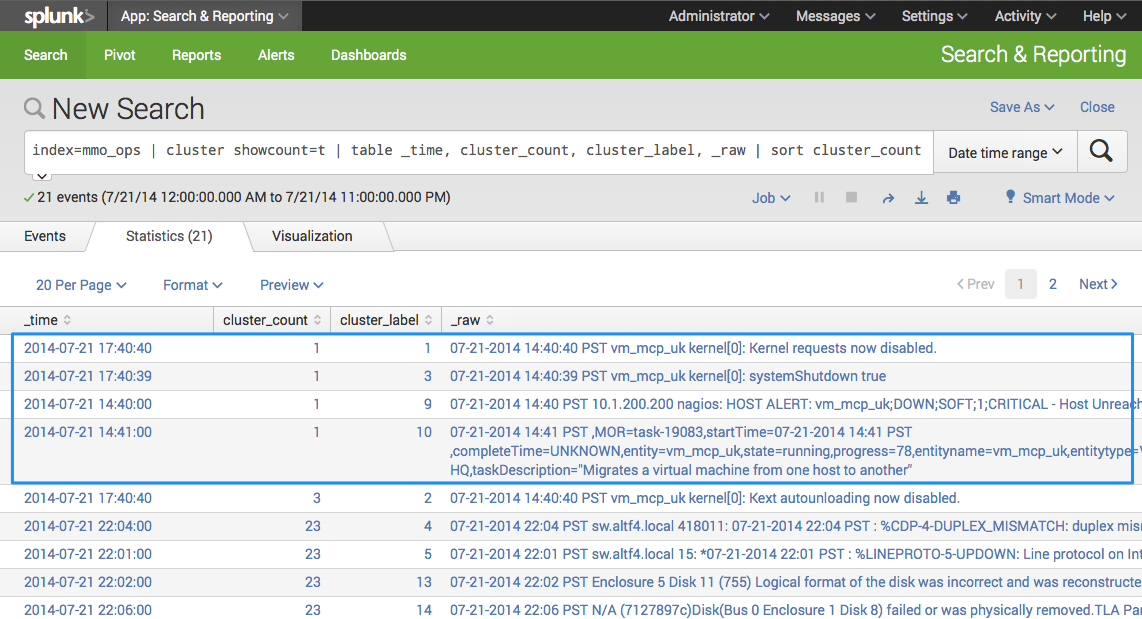

Now when a private app is installed using the ACS CLI it will automatically be submitted to AppInspect for vetting.
SPLUNK COMMANDS INSTALL
The following command will install a private app named company_test_app: acs apps install private -acs-legal-ack Y -app-package /tmp/company_test_app.tgz Let’s look at how we use the ACS CLI to install a private application. Application Management: Installing a Private App For private apps these credentials will be used to authenticate to AppInspect for application vetting. You can pass –username –password parameters along with the command to avoid prompting for credentials.
SPLUNK COMMANDS UPDATE
Specific to only Splunkbase applications there is an update command which allows you to, you guessed it, update the application to the latest version published and available.įor both private and Splunkbase apps, when running a command it will prompt you to enter your credentials. The command is easy to understand and straightforward, for both private and Splunkbase applications it supports commands to install, uninstall, describe applications within your environment as well as a list command to return a complete list of all installed applications, with their configurations. That means, using the ACS CLI you can install both private applications and Splunkbase applications. One of the most exciting features of the ACS CLI is the ability to control all aspects of application management. There are many more self-service features supported by the ACS CLI, details of the supported features and CLI operations are available in the Splunk Cloud ACS CLI documentation. Interacting With The ACS CLIīelow are examples of common interactions an administrator might have with Splunk Cloud now done by leveraging the Splunk Cloud ACS CLI. We will keep an eye out for Splunk adding to the logging and auditing functionality not just in the ACS CLI but ACS as a whole and provide a future blog post on the topic when available. The acs.log allows an administrator to understand what operations were run, request IDs, status codes and much more. This log file can be collected using the Splunk Universal Forwarder, or other mechanism, to create an audit trail of activities. It is recommended that any administrators given access to work with the ACS CLI have the log file listed below collected and forwarded to the their Splunk Cloud stack. However, when using the ACS CLI it will create a local log on the system where it is being used. ACS CLI LoggingĪt the time of authoring this blog, logging and auditing of interactions through the Splunk Cloud ACS is not readily available to customers. Please refer to the Splunk ACS CLI documentation for further information regarding the requirements and the setup process. To use Application Management functions, your Splunk Cloud version must be or greater.
SPLUNK COMMANDS WINDOWS
However, if you are a Windows user you can use the Windows Subsystem for Linux (WSL), or any Linux VM running on Windows, to install and use the ACS CLI.
SPLUNK COMMANDS MAC
You must be running a Mac or Linux operating systems.You must have the sc_admin role to be able to leverage the ACS CLI.ACS CLI Setup Requirementsīefore you get started with the ACS CLI there are a few requirements to be aware of: We would recommend that you first refer to the ACS Compatibility Matrix to understand what features are available to the Classic and Victoria experience Splunk Cloud platforms.


One big advantage we see with the ACS CLI is how it can be used in scripted approach or within a deployment CI/CD pipeline to handle application management and index management. The ACS CLI is much easier to use and less error-prone compared to the complex curl commands or Postman setup one has had to deal with to-date. To our excitement Splunk has recently released a CLI version of ACS. It was released as an API-based service that can be used for configuring IP allow lists, configuring outbound ports, managing HEC tokens, and many more which are all detailed in the Splunk ACS Documentation. Splunk Cloud Admins rejoice! The Splunk Cloud ACS Command Line Interface is here! Originally, the Splunk Cloud Admin Config Service (ACS) was released in January 2021 to provide various self-service features for Splunk Cloud Admins.


 0 kommentar(er)
0 kommentar(er)
